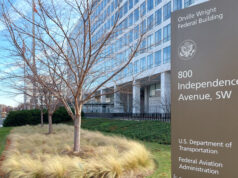
The show 90 Day Fiancé is a rather popular reality TV franchise. With nine seasons and over 100 episodes, this show has delighted and stunned the American public. The legal structure of the fiancé visa, however, is less known.
The fiancé visa, known in the legal world as the K-1 visa, is the result of a legal process that allows U.S. citizens (not permanent residents) to petition for their fiancés to come to the U.S. for the purpose of marriage. As opposed to what the show portrays, couples who file for this visa should already have the intent of marriage at the time of filing. Couples are also required to have met in person at least once in the two-year period immediately preceding the filing of the petition. This means that you cannot file for this visa if you have never physically met your fiancé. Exceptions to this requirement are available but rarely given.[1]
As with any other family-based petition, the K-1 visa requires that the relationship be legitimate. For marriage-based petitions you must show that you have a good-faith relationship and the marriage is not being entered into for the sole purpose of receiving an immigration benefit.
The K-1 visa has two distinct steps. First, the process is started in the U.S. when the U.S. citizen petitioner files a fiancé petition with the U.S. Citizenship and Immigration Service. This petition must be accompanied by evidence of a good-faith relationship, proof that you have met in person, and a signed statement communicating the petitioner’s intent to marry the beneficiary within ninety days of their arrival –hence a “90-day fiancé.” Couples also need to show that they are legally able to marry, meaning all previous marriage relationships have been terminated either by death or divorce.
Once the fiancé petition is granted, the beneficiary files a non-immigrant visa application with their local U.S. Embassy. The embassy will then schedule an interview for the beneficiary where they will assess the person’s admissibility to ensure that there are no previous immigration violations, no concerning criminal background, and no other disqualifying issues, among other things. The beneficiary must also schedule a medical exam with a local civil surgeon to rule out medical issues such as communicable problems or public health threats. If all is in order, the U.S. embassy will issue the visa. It is worth noting that the K-1 visa process can also include the beneficiary’s children from previous relationships provided they are under 21 years of age at the time of filing.
Once all of this is accomplished, the beneficiary enters the U.S. and must marry within 90 days. If the couple doesn’t marry within that time period, the beneficiary must depart or risk becoming undocumented and penalized or barred from receiving legal status in the future. U.S. immigration law does not allow K-1 visa recipients who do not marry to change statuses. In essence, they must either marry or depart.
If the couple does marry, the beneficiary is now eligible to adjust their status to a legal permanent resident without having to undergo the I-130 family petition process that other couples usually do. While the K-1 visa process lacks the romance and magic typically characterized by engagements, it’s an excellent option for couples who wish to be together throughout the pre-wedding process.
[1] The law does allow for a filing of a waiver if this requirement cannot be met but the requirements are very stringent. You’d have to show that meeting in person would either violate long-standing cultural traditions or that it would cause extreme hardship to the U.S. citizen petitioner.





























































































































